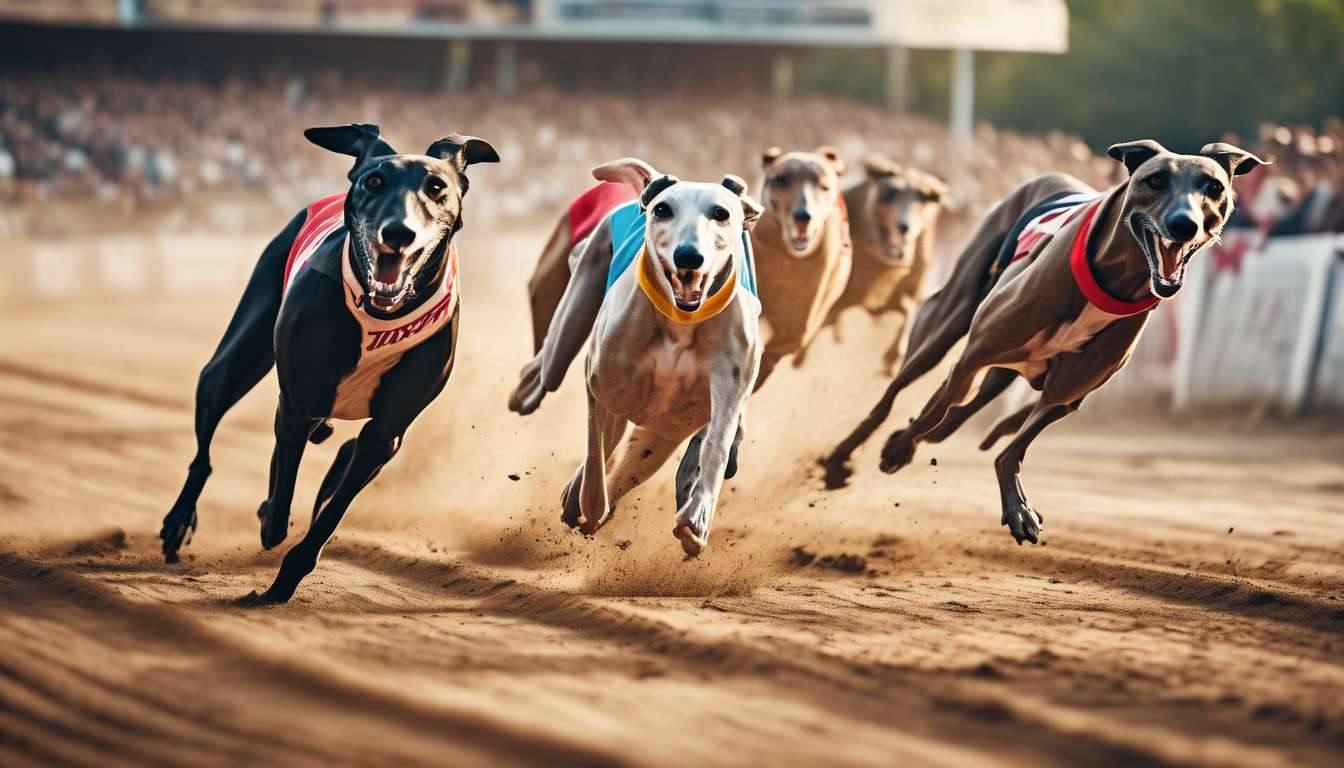In the ever-evolving world of horse racing, we find ourselves constantly seeking new perspectives to understand the dynamics between sprinters and stayers. Our fascination with these equine athletes drives us to explore the nuances that differentiate a swift sprint from a prolonged endurance race.
Together, we embark on a journey through nine analytical angles that promise to shed light on the intrinsic qualities and strategic considerations of both types of racers. By examining these angles, we not only deepen our appreciation for the sport but also enhance our ability to predict outcomes and make informed decisions.
Key Analytical Angles:
-
Physiological Attributes:
- Muscle composition
- Lung capacity
- Heart size
-
Training Methodologies:
- Intensity and duration of workouts
- Recovery periods
- Nutritional strategies
-
Racing Strategies:
- Pacing techniques
- Track conditions
- Jockey tactics
As we delve into their physiological attributes, training methodologies, and racing strategies, we aim to unravel the complexities that make each unique. Our shared passion fuels this exploration, as we strive to uncover the secrets behind the breathtaking speed of sprinters and the enduring stamina of stayers.
Let us begin this analytical adventure together.
Comparative Performance Analysis:
When comparing sprint and stayer athletes, we need to analyze their distinct performance metrics to understand their strengths and weaknesses. Speed and endurance are the cornerstones of their respective domains, forming a basis of community among enthusiasts who appreciate the nuances of both athletic worlds.
Sprint athletes focus on explosive speed, aiming to maximize their velocity over short distances. This requires:
- Raw power
- Efficient biomechanics to maintain form under high-intensity conditions
Stayer athletes, on the other hand, excel in endurance, pacing themselves over longer distances. Their performance hinges on:
- Sustaining energy
- Maintaining biomechanical efficiency over time
By appreciating these differences, we can foster a sense of belonging among fans and athletes, celebrating the diverse skills each group brings to the table.
As we dive deeper into this analysis, let’s embrace the camaraderie that understanding these metrics fosters. We might be fans of different disciplines, but our shared appreciation for athletic excellence unites us all.
Biomechanical Considerations:
When analyzing sprint and stayer athletes, we need to focus on how their distinct biomechanical movements contribute to their performance efficiency.
Sprinters rely on explosive power and speed, emphasizing rapid muscle contractions and short ground contact times. Their biomechanics include:
- High stride frequency
- Powerful leg extensions
These factors propel them forward in short bursts. For us, understanding these dynamics fosters a deeper connection to the athletic journey.
Stayers, on the other hand, prioritize endurance over speed. Their biomechanics involve a more economical stride, conserving energy over longer distances. This efficiency is achieved through:
- Lower stride frequency
- Longer ground contact times
These techniques allow them to maintain a steady pace. By appreciating these differences, we create a sense of belonging in a community that values both speed and endurance.
As we delve into these biomechanical aspects, we recognize the intricate balance athletes maintain between power and efficiency. Together, we celebrate the diverse skills that make each athlete unique in their discipline.
Endurance Training Insights:
In our exploration of endurance training, we focus on methods that build stamina and resilience over long distances. We embrace the challenge of balancing speed with endurance, knowing that both elements are crucial for success.
Our community thrives on pushing limits together, finding motivation in shared goals and achievements. By analyzing biomechanics, we identify efficient movement patterns that sustain our energy and support our speed during extended efforts.
Our training sessions often include a mix of:
- Long, steady runs
- Interval workouts
This combination enhances our cardiovascular system and strengthens muscles, allowing us to maintain a steady pace without undue fatigue. We emphasize proper form and technique, ensuring that each step is effective and minimizes the risk of injury.
As we share insights and experiences, we foster a sense of unity and growth. Together, we celebrate personal bests and encourage one another to reach new heights, understanding that in endurance training, we’re stronger as a community.
Speed vs. Stamina Metrics:
In evaluating the balance between speed and stamina, we often rely on specific metrics that provide insights into our performance capabilities and areas for improvement. These metrics help us understand where we stand and how we can enhance our racing skills.
Speed Metrics:
- Focus on our ability to achieve and maintain high velocity over short distances.
- By analyzing our biomechanics, we identify inefficiencies in our stride.
- Make necessary adjustments to boost our speed.
Endurance Metrics:
- Measure how effectively we can sustain activity over longer periods.
- Assess our cardiovascular efficiency and muscular endurance.
- Crucial for stayers who need to maintain a steady pace.
By examining data from both areas, we create a comprehensive picture of our racing profile.
Together, these insights foster a sense of community as we share experiences and strategies, supporting each other in our shared journey toward achieving our racing goals. Let’s embrace these metrics and improve collectively.
Genetic Factors Impacting Racing:
Genetic Factors in Racing Abilities
Genetic factors play a crucial role in determining our innate racing abilities and potential for improvement. As a racing community, we understand that speed and endurance aren’t just skills we develop; they’re also deeply rooted in our DNA.
Muscle Fiber Types and Performance
Our genetic makeup influences muscle fiber types, which directly impacts how we sprint or stay the course.
- Fast-twitch fibers: Provide explosive speed for short bursts.
- Slow-twitch fibers: Essential for sustained endurance over longer distances.
It’s fascinating to see how our biomechanics align with these genetic predispositions.
Community and Connection
We all share a passion for racing, and knowing our genetic strengths helps us feel more connected to one another. When we recognize that our genes shape our racing capabilities, we can tailor our training to enhance what comes naturally.
Embracing Genetic Potential
By embracing our genetic potential, we foster a sense of belonging within our community, united by the unique blend of speed and endurance each of us possesses. Let’s celebrate this diversity and push our limits together.
Recovery and Regeneration Tactics:
In our racing journey, focusing on effective recovery and regeneration tactics is crucial for maximizing performance and longevity. After pushing our limits, whether it’s a quick sprint or a grueling endurance race, our bodies need proper care to bounce back stronger. By understanding the biomechanics of our muscles and joints, we can tailor our recovery strategies to maintain speed and build endurance.
Our community thrives when we share and learn from each other’s experiences. Let’s prioritize active recovery methods like:
- Dynamic stretching
- Low-intensity workouts
These activities help keep our bodies in peak condition.
Utilizing techniques such as:
- Massage therapy
- Cryotherapy
can also enhance circulation and reduce inflammation, promoting quicker recovery.
Let’s not forget the importance of rest. Quality sleep is our body’s natural way of repairing itself, and aligning our sleep cycles with our training can significantly boost our performance.
Together, let’s embrace these tactics to ensure we stay at the top of our game.
Tactical Approaches on the Track:
On the track, understanding our strengths and weaknesses allows us to craft strategies that maximize our competitive edge.
We know that speed and endurance are the pillars of our success, but how we harness these elements can set us apart. When we race, we’re not just relying on raw ability; we’re leveraging our biomechanics to refine our technique and boost performance.
For sprinters, explosive speed is our weapon.
- We focus on quick, powerful strides.
- We utilize our biomechanics to optimize acceleration and maintain top velocity.
- We work on perfecting our start and driving through each step with purpose.
For stayers, endurance is key.
- We pace ourselves strategically, conserving energy for powerful finishes.
- Our biomechanics help us maintain efficiency over longer distances, ensuring every motion counts.
Together, we share these principles, finding camaraderie in our shared pursuit of excellence.
By aligning our strategies with our unique physical capabilities, we don’t just compete; we thrive as a unified team.
Adaptations to Varying Distances:
As athletes, we must tailor our training and strategies to the specific demands of each distance to excel in our events.
Sprints:
- Focus on maximizing speed.
- Refine biomechanics to ensure explosive starts.
- Develop powerful strides.
- Training incorporates:
- Short, intense bursts.
- Plyometric exercises to enhance fast-twitch muscle fibers.
- We bond over shared goals and the collective energy of pushing our limits together.
Longer Distances:
- Endurance takes center stage.
- Concentrate on building aerobic capacity and stamina.
- Workouts include longer runs at varied paces to enhance the body’s ability to sustain effort over time.
- Biomechanics remain crucial, as efficient form reduces fatigue and conserves energy.
- Support each other through grueling long runs, knowing that shared commitment makes us stronger.
In both scenarios, understanding the interplay of speed, endurance, and biomechanics allows us to adapt and thrive, reinforcing our sense of community as we chase personal bests together.
What historical trends have influenced the development of sprint and stayer racing strategies?
Exploring Historical Trends in Racing Strategies
As we delve into the historical trends that have shaped sprint and stayer racing strategies, we uncover a rich tapestry of influences.
Key Factors Influencing Racing Strategies:
-
Advancements in Training Techniques: Over the years, improvements in training methods have significantly impacted how sprinters and stayers prepare for races. Enhanced conditioning and tailored training regimens allow horses to maximize their potential and adapt to different racing styles.
-
Changes in Track Surfaces: The evolution of track surfaces has also played a crucial role. Different surfaces can affect the speed and endurance of horses, prompting trainers and jockeys to adjust their strategies accordingly.
-
Shifts in Breeding Preferences: Breeding practices have shifted over time, with certain traits being emphasized to produce optimal sprinters or stayers. These preferences influence the genetic makeup of racing horses, impacting their performance and race strategy.
These developments have collectively molded the way sprinters and stayers approach races, highlighting the dynamic nature of the sport and the constant evolution of strategies to achieve success on the track.
How does the psychological mindset differ between sprinters and stayers during a race?
During a race, the psychological mindset of sprinters and stayers varies significantly.
Sprinters focus on:
- Explosive bursts of energy
- Quick finishes
- Thriving on the adrenaline rush of short bursts
Stayers prioritize:
- Pacing themselves for the long haul
- Finding comfort in steady, consistent effort
Understanding these differences is crucial for maximizing performance and achieving goals on the track.
Are there specific nutritional strategies that benefit sprinters differently from stayers?
When it comes to specific nutritional strategies, sprinters and stayers have different needs.
Sprinters may benefit from quick energy sources, primarily focusing on carbohydrates for their bursts of speed. These quick energy sources can include:
- Simple sugars
- Energy gels
- Sports drinks
Stayers, on the other hand, might focus on sustained energy through a balanced intake of:
- Carbohydrates
- Fats
- Proteins
Hydration is key for both sprinters and stayers, but the timing and amount can vary based on the race length.
- For shorter races, sprinters might focus on hydrating before the event.
- For longer races, stayers should maintain hydration throughout, possibly incorporating electrolytes.
Tailoring nutrition to individual race styles is crucial and can help athletes perform at their best. Adapting these strategies to each athlete’s unique requirements ensures optimal performance.
Conclusion
In conclusion, understanding the key differences between sprinters and stayers can provide valuable insights for athletes and coaches looking to optimize performance.
By analyzing the following aspects, individuals can tailor their approach to sprinting or distance running accordingly:
- Biomechanics
- Training strategies
- Genetic influences
- Recovery methods
- Tactical approaches
Embracing these analytical angles will not only enhance athletic abilities but also lead to more effective and efficient training regimens for both sprinters and stayers alike.




